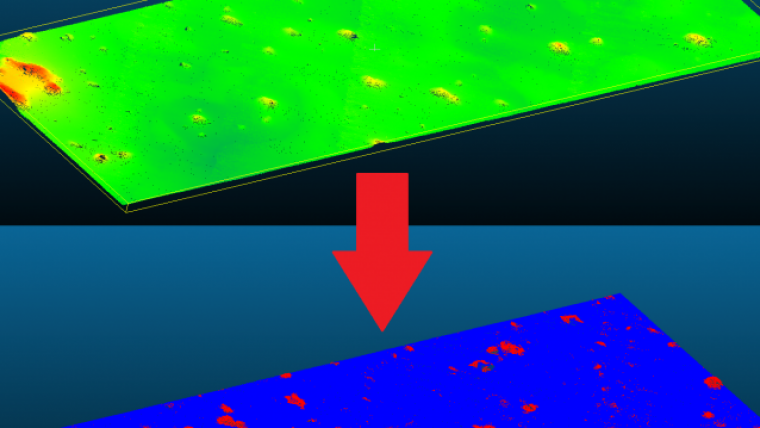Data is here to stay
While online data acquisition is of course of the utmost importance in hydrography, technological developments mean that modern surveyors also need to know about data science, machine learning and artificial intelligence. This, therefore, should be reflected in training requirements, writes Huibert-Jan Lekkerkerk, technical editor of Hydro International.
Competencies and training seem to take up most of my time lately. As you may be aware, besides being a technical editor and author for this magazine, I spend a lot of time teaching professionals on Skilltrade’s Cat B course and ‘youngsters’ on the NHL Stenden / MIWB Cat A courses in the Netherlands. I am also involved in the IFHS Hydrographic Professional Accreditation Scheme (HPAS) as one of the two Hydrographic Society Benelux members on the assessment panel.
Anyway, competencies. As both courses are up for re-accreditation next year, I am spending a lot of time going through the S5 (A and B) standards of competence. As always, I am amazed at how many technical competencies we expect from our hydrographic surveyors. While some in the industry proclaim that surveying is becoming easier, this cannot be seen in the standards of competence.
For example, I recently had a discussion with members of the hydrographic industry about the Cat A course. At some point, the conversation turned to data science, and the point was made that modern surveyors cannot function without learning more about data science. However, looking at S5, roughly 10% is about data processing and charting, and the other 90% about data acquisition and validation.
If we look at the IHO standards of competence for cartographers (S8), there is not much more about data science here either. The focus of S8 is mainly on creating navigation products, which may be digital or paper, but there is little on the data science aspect. However, techniques such as machine learning and AI are the up-and-coming methods in my opinion and, combined with GIS algorithms and elaborate databases, will probably feed the need for information in the future. Hydrographic data will be a small aspect of these future information systems.
The industry recognizes this, hence the request to spend more time on ‘data’ in the courses, which brings me to a second set of competencies: soft skills. The IHO does not spend many words on soft skills in their standards of competence, and neither does the new IFHS HPAS. However, if you have ever been offshore, you know that technical competencies are not all that matters. You can have the best and brightest onboard, but if they are not team players or cannot handle the stress of a sensor not cooperating, they can be a burden rather than an asset.
What, then, does this have to do with data science? Well, I find that professional students with some years of experience in the field never discuss the importance of data science. Rather, they always want more than the standards require. With the ‘youngsters’ fresh out of school, however, it is the other way around, especially after they return from their traineeship. The Cat A students are required to carry out a 100-day traineeship at a hydrographic organization, and many of them spend most of this on a ship or construction project. Most are not fanatical about databases, programming and GIS before they go on their traineeship, but when they come back after their 100 days, matters get worse and their interest is only in online surveying.
However, they are not alone. A quick look at the HPAS standard shows that online surveying is also one of the main professional competencies, and we still distinguish hydrographic surveyors from cartographers, even though the divide between them is fading. I therefore think that we have a contradiction that we as a survey community need to recognize and probably address, and I am not alone: a Canadian initiative was recently started on hydrospatial as an extension of hydrography.
To make this work, everybody in hydrography first needs to not only recognize this fact, but also accept it and start to work with it. My plea to the community is therefore to pay more attention to spatial data, in word and deed. This means making sure that surveyors not only spend time online but also become aware of how the data is used. One place to start is with the youngsters during their traineeship. Getting them hooked on data science is a soft skill that we, as their mentors, need to exercise, so that they want to become proficient in this important technical skill.
The good news is that the message is getting through to a few students each year. Of the 20 to 30 Cat A students each year, two or three are really interested in data science and do their Bachelor’s thesis on a related subject. In fact, an article was recently published on the research of one of these students on AI. And, to compensate, an article was also published by another student on MBES backscatter data acquisition. After all, you will never hear me say that online data acquisition is not important to our business, there is just more to it than that.

Value staying current with hydrography?
Stay on the map with our expertly curated newsletters.
We provide educational insights, industry updates, and inspiring stories from the world of hydrography to help you learn, grow, and navigate your field with confidence. Don't miss out - subscribe today and ensure you're always informed, educated, and inspired by the latest in hydrographic technology and research.
Choose your newsletter(s)
























